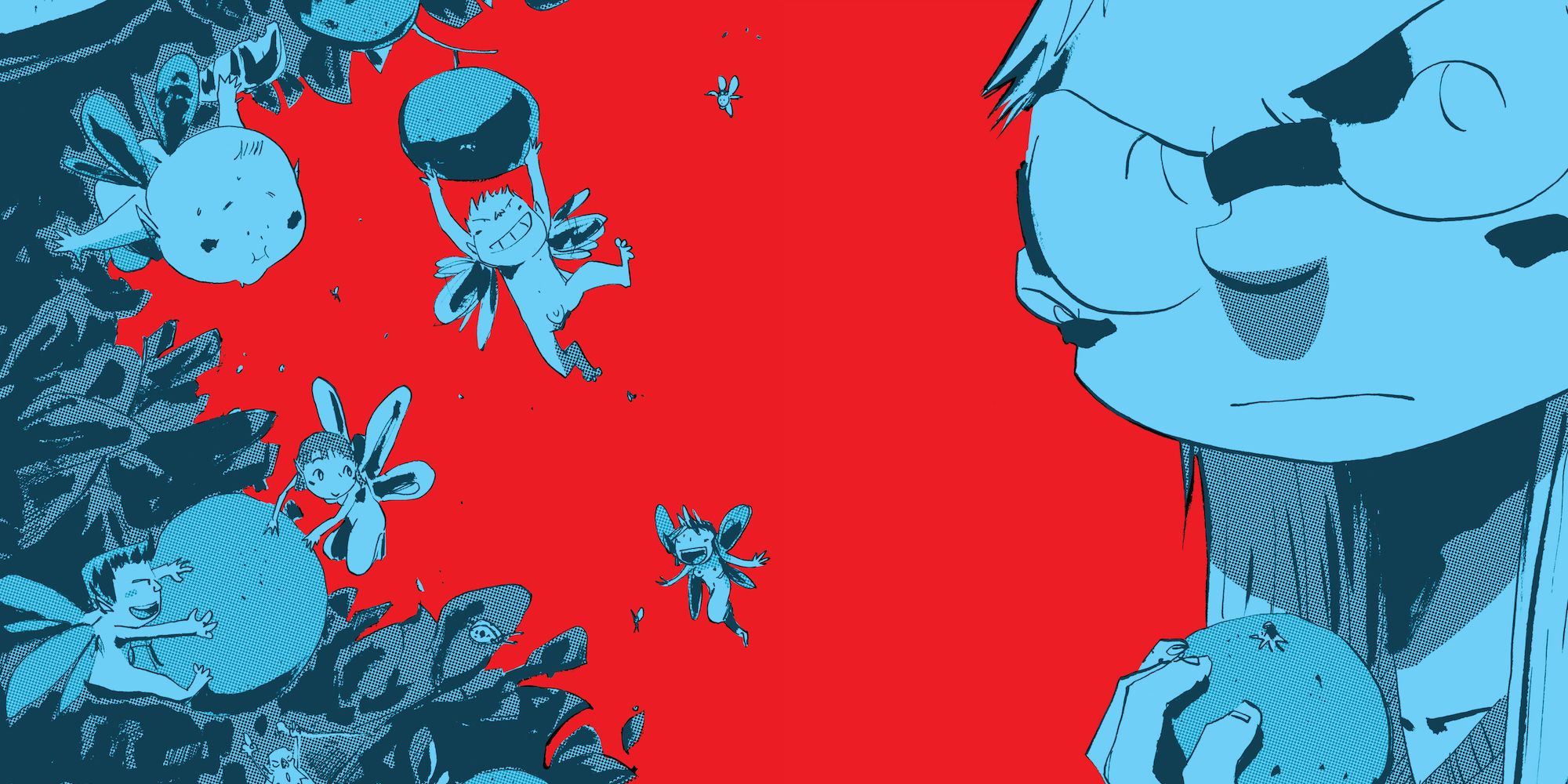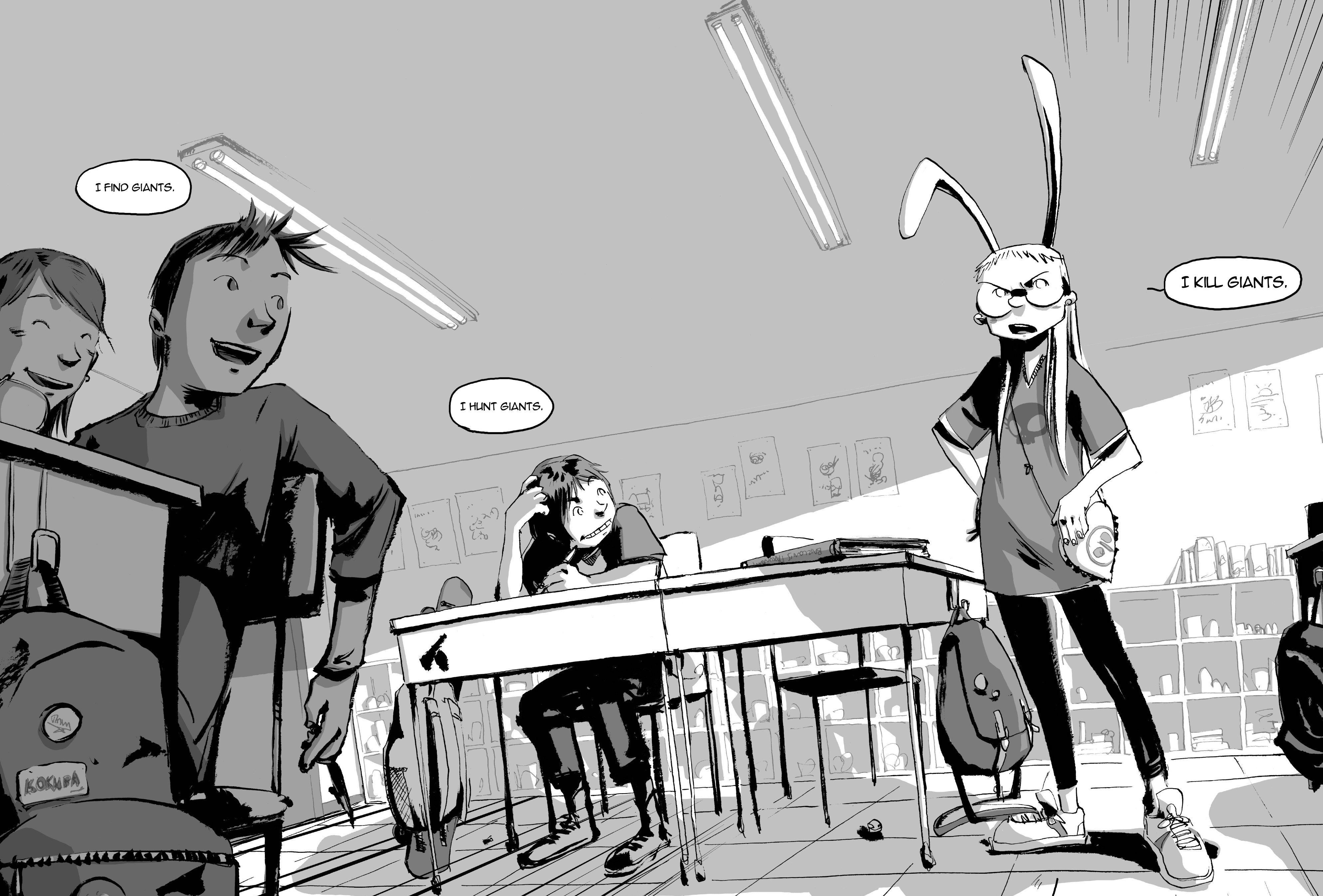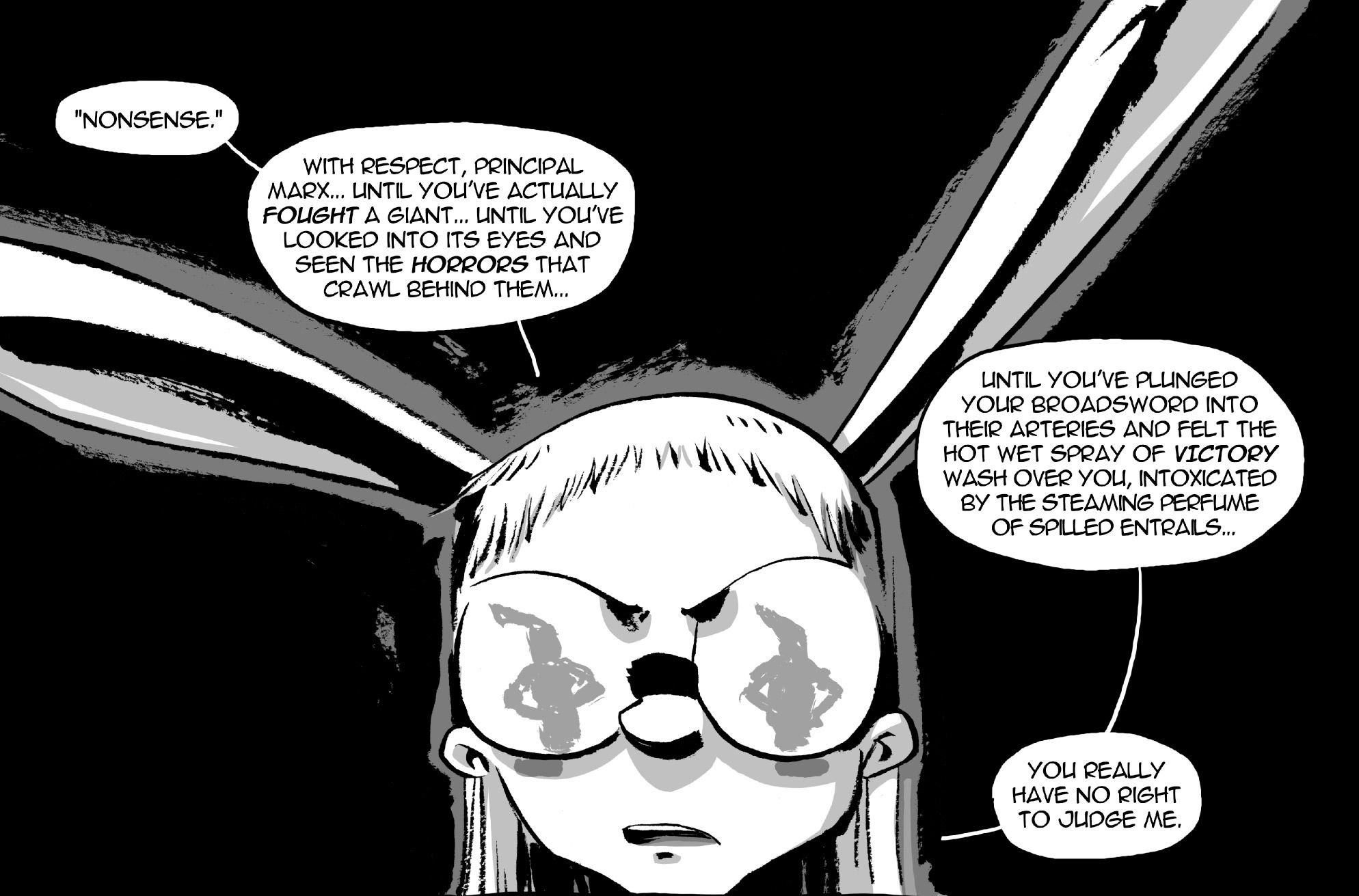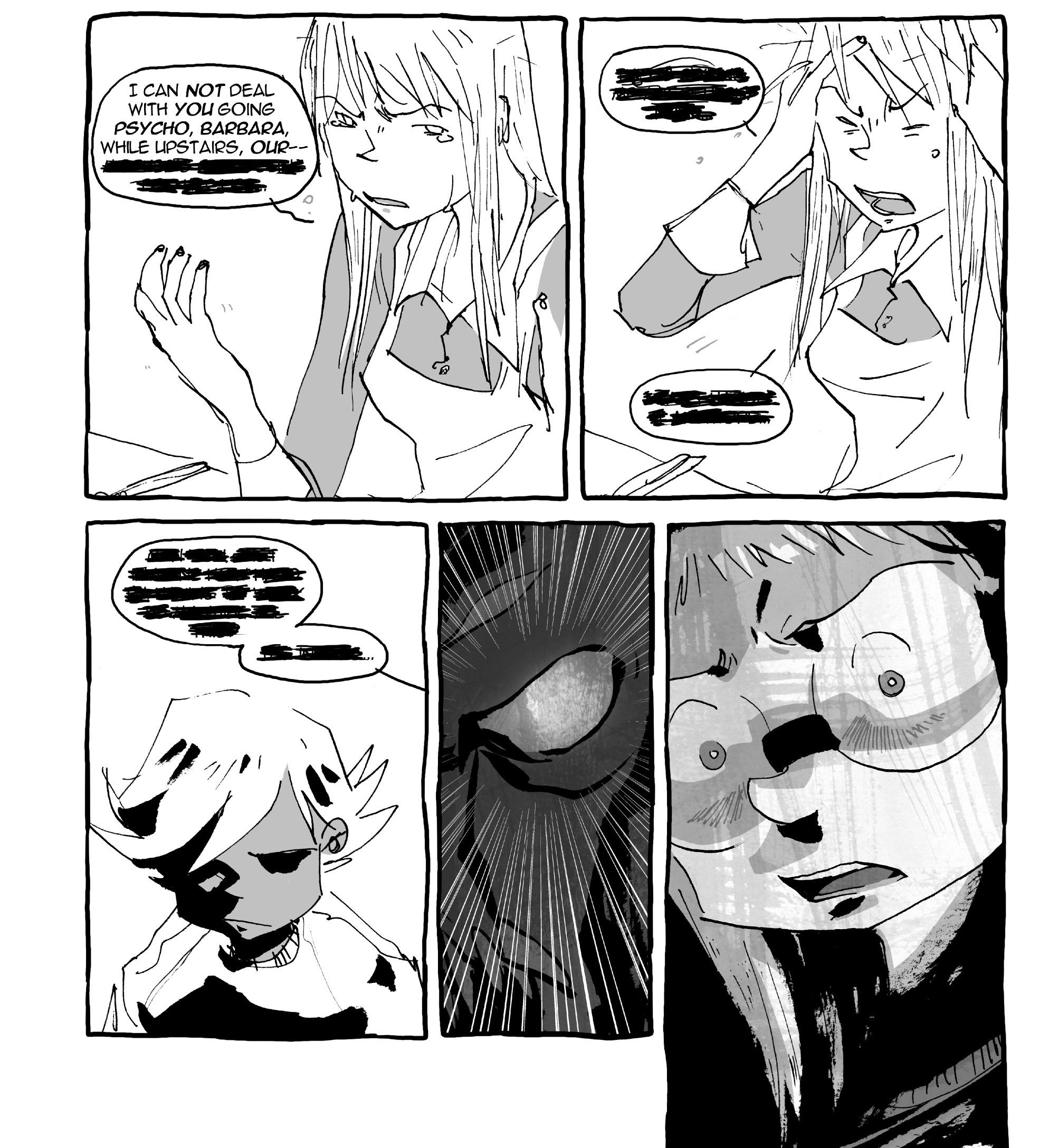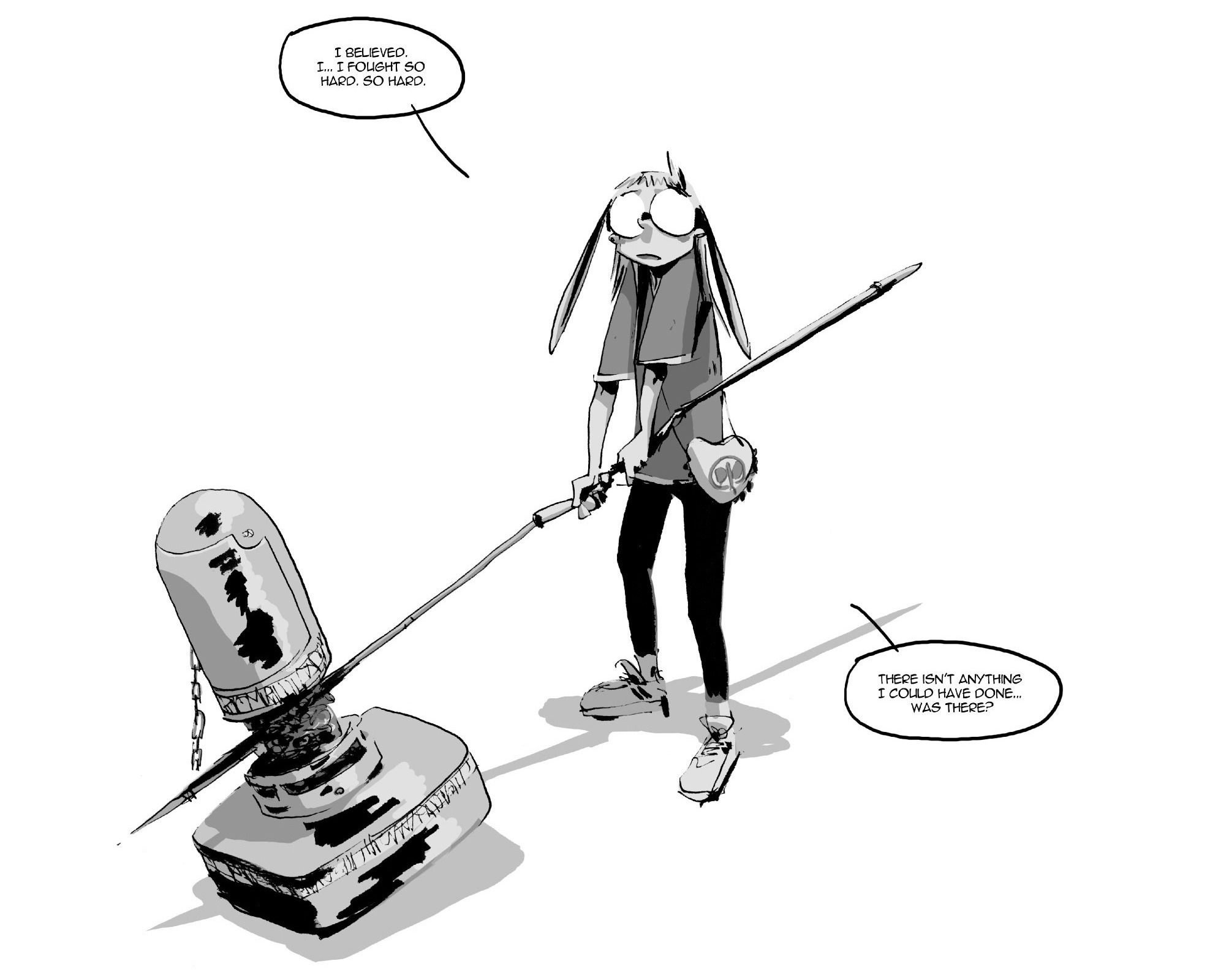Giant Spoilers Ahead: It’s impossible to talk about Joe Kelly and J. M. Ken Niimura‘s 2007 series I Kill Giants without outright spoiling the entire thing.
At the 2017 Toronto International Film Festival the long awaited adaptation of Joe Kelly and J. M. Ken Niimura's 2007 series I Kill Giants finally debuted. While the amount of reviews for the film can be counted on one hand (with fingers left over) the film is directed by Anders Walter (who won Best Live Action Short Film at the 86th Academy Awards), and is described by The Verge as being “particularly assured and remarkable.”
RELATED: I Kill Giants Movie Debuts First Footage
Knowing the adaptation does the original justice is great news. I Kill Giants is, in no uncertain terms, one of the best comics of the last decade. In the span of seven issues, Kelly and Niimura craft an incredibly poignant story that tackles grief, denial and loss. It’s a series that presents escapism as a double-edged sword: there’s nothing inherently wrong with avoiding the harshness and unpleasantness of reality, but there’s a limit. You can only run from your problems and the real world for so long.
Barbara Thorson is not like other students. While her classmates talk belly shirts, Britney Spears-inspired haircuts and movie award shows, Barbara’s nose is buried deep in her Dungeons & Dragons Dungeon Master rulebook. She’s too smart for her own good so she keeps to herself. She’s an outsider, a weirdo. You probably knew a kid like Barbara in high school (you might’ve even been that kid).
She also hunts and kills giants.
She doesn’t relate with her classmates because she thinks their interests are superficial and trivial. Barbara has serious and important work to do, namely protecting the town from invading giants. It’s serious business. If not for her, giants would’ve devoured the town a long time ago.
RELATED: First Look At I Kill Giants Film Starring Zoe Saldana
Kelly and Niimura blur the line between fact and fiction, where you're never quite sure of the reality of what's depicted. The sprites and fairies she interacts with also interact with other parts of the world, and it's not as though "Character Can See Magic Creatures Others Can't" isn't an uncommon trope, but Barb seems to be the only one who sees them. Is Barbara just a weird fifth grader with an overactive imagination, or is she actually able to see a world that no one else can? We’re seeing the world from her perspective, and it’s her steadfast belief in the fantastical that make us believe in them too.
Kelly doesn’t give us the truth until the penultimate issue, and it’s a revelation that hits like a truck. The giants, fairies and other magical creatures that only Barbara can see don’t exist. They’re an escapist fantasy she’s created because her mother is currently dying of cancer. The only giant here is the looming spectre of death.
People deal with grief in different ways. Finding some form of escapism is one of them. Life can be unpleasant, so it's natural to want to escape to a safe place. That place can be anything – a book, a movie, an album or even a fantasy world of your own creation.
There’s nothing inherently wrong with escapism, but constantly running from your problems isn’t a solution. It's unhealthy. It just creates more problems in the long run. Barbara becomes too disconnected from reality and she suffers for it. She literally tries to fight a tornado because she thinks it’s a Titan (a giant that makes regular giants look tiny) and almost loses her life because of it. In her head, the Titan has come to take her mother, so the only way to save her is to strike the colossal beast down.
The more Barbara opens up to the world, the more vulnerable she becomes. If she closes herself then the world can’t hurt her. It’s easy to push people away than let them in. Every attempt Ms. Molle, the school’s new psychiatrist, makes to help Barbara open up is met with sarcastic hostility. There are a few moments where she does drop her guard, but Barbara quickly returns to her shell and becomes aggressive, striking Ms. Molle at one point. She doesn’t connect with her other classmates, because it’s hard to care about the new Oslen Twins movie when your mother is dying. She’s only in the fifth grade, but Barb’s had to grow up much faster.
Barbara cannot deal with the reality of the situation, so she blocks it out. As her brother and sister talk about their mother, you can feel the air being sucked out of the room. Niimura’s art loses its detail and shading becoming only scratchy pen lines, while his lettering devolves into black scribbles (the latter is recurring when characters try to talk about Barb's mom). She doesn't see her mother as a frail women in bed calling for her daughter but as a grim spectre that hisses her name. She can't even make it up the flight of stairs, preferring to sleep in the basement.
While speaking to Ms. Molle, Barbara discusses the existence of giants. “A giant comes to a place and takes everything from you,” she explains, “and when it’s done it’s like whatever made your life good was never there.” Ms. Molle asks her if she’s afraid of them, with Barb telling her she isn’t and that, “If I’m strong enough. If I stay focused and I’m worthy I can stop death itself.”
Page 2: [valnet-url-page page=2 paginated=0 text='A%20Choice%3A%20Death%20or%20the%20Acceptance%20of%20Life']
Barbara needs to be in control. That’s why she’s constantly reading her Dungeon Master guide. In the games of Dungeons & Dragons she plays with her brother and his friends, she is effectively their god. She creates the world of the game and establishes the rules within it. By the roll of her dice she decides who lives and dies. Sometimes Barbara is fair and just in her actions, but sometimes people will die for no reason –- her brother’s joke about stabbing an ogre’s bum ends up with his character’s death.
Is it fair that his character was permanently killed for a silly reason? No, but sometimes life isn’t fair like that. If Barb was in charge, her mother wouldn’t have developed terminal cancer; bad things wouldn’t happen to good people. But she’s not in charge, so she created a fantasy world where she is in charge. She may not know how to defeat cancer, but she knows how to kill giants.
As the tornado drags Barbara out to sea, the Titan speaks to her: “All things that live, die. This is why you must find joy in the living, while the time is yours, and not fear the end," leaving the little warrior with one final nugget of wisdom, "You’re stronger than you think you are.” She’s given a choice: take the ultimate escape, death, or swim to the surface and accept life for what it is, both the good and bad.
Barbara is going to lose her mom, and there’s nothing she or anyone can do to stop that. The only thing she can really do is savor the time she has left. Enjoy the moment, because she’ll regret not doing so when she’s finally gone. It's as heartbreaking as it is beautiful.
Sometimes life is hard and the last thing you want to deal with is reality. It’s a natural feeling; everybody does it, some more than others. Kelly understands this, but he also understands that you can only avoid a problem for so long. You aren’t really living if you’re constantly running. Barbara finally opens herself up to the world, reconnecting with her mom and also manages to make a new friend. No one wants to lose anyone they love, but it's a hard fact of life. You've got to take the good with the bad, and while the bad may feel like a colossal beast that you can't overcome, you’re stronger than you think you are and you're not alone.
As it stands, Walter’s adaptation of I Kill Giants doesn’t currently have an American distributor, but here’s hoping it gets picked up. If the film can capture half of the comic’s beautiful catharsis, it’ll definitely be a must watch.

